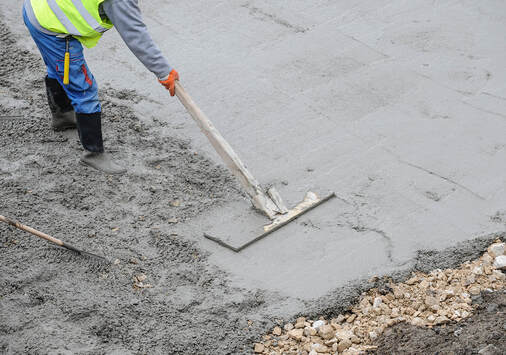Decorative Concrete - Stamped & Stained Finishes

While standard poured concrete looks absolutely beautiful, thanks to its grey finish and aggregate added in, there may come a time when you want your concrete to look not completely natural. This is where decorative concrete comes in to play. Decorative concrete is simply concrete that has been enhanced to look a different way. Usually, this process involves stamping or engraving concrete to add a pattern to it, that simply isn’t possible with poured concrete. However, decorative concrete can also be the result of acid standing or color dyeing, too.
Stamped Concrete Because natural stones can be rather expensive to use in any type of construction project, and because they don’t hold up under immense traffic, concrete is often used as a substitute. However, if you are looking for the aesthetic of stone, concrete may not do the trick for you. This is where stamped concrete comes in to play. Stamping concrete is the process of adding texture and color to concrete aggregate, while it is setting, to make it appear as though it is stone, brick, or cobblestone. This process is done by pressing molds in to semi-wet concrete and letting it set. Acid Staining A great way to give a completely unique look to your poured concrete surface is to add a layer of acid staining. Unlike other decorative concrete processes, with acid staining, you aren’t adding anything to the concrete to alter its appearance. With this process, we are actually pouring an acid on top of the concrete that, when a chemical reaction takes place, produces new colors and textures within the poured concrete. After the chemical process takes place, the concrete is neutralized with ammonia and then it can either be left as is, or more likely, sealed to maintain its new appearance. Engraving Engraving is similar to stamping, except that it is not done by pressing a mold in to non-dry concrete. Engraving is done after concrete has been poured and completely set. In this process, the top layer of concrete is actually cut in to, revealing a lighter shade of concrete underneath it. This process can either be done by hand or with more modern technology, like a mobile CNC concrete engraving machine. This process can produce both simple and complex designs. With the biggest benefit of this process being that it can be done at nearly any time in the concrete’s lifecycle. Concrete Dye Another way to enhance the appearance of concrete is with concerted dye. Concrete dyes are made from printing inks that are added to solutions of either alcohol, acetone or lacquer and then mixed in to the concrete itself. By using this process, concrete can be made in to many different colors, helping to give a personal touch to your home or business. The biggest downfall of this process is that concrete dyes are very susceptible to fading while being exposed to sunlight. As a result, this concrete typically fairs better for interior projects. |

